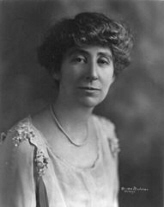Will Montana Split Its Congressional Ballot Again in 2014?
Only two of 27 states have split their vote for U.S. Senate and at-large U.S. House seats in a majority of elections over the last century: Montana (78 percent of the time) and South Dakota (60 percent)

Baucus resigned to become U.S. Ambassador to China two months ago and the former six-term Democratic Senator’s seat was subsequently filled with the appointment of Democratic Lieutenant Governor John Walsh.
Democrats are optimistic the appointment will give Walsh an advantage in the general election. However, recent research by Smart Politics threw cold water on the notion of an incumbency advantage of such appointees, who have subsequently been elected at a rate only slightly north of 50 percent.
If Walsh wins his party’s nomination, he will likely face Republican U.S. Representative Steve Daines, who would become the second consecutive GOP U.S. House member to make a run at the upper legislative chamber in Montana – Denny Rehberg was narrowly dispatched by incumbent Jon Tester back in 2012.
And while Republicans are favored to hold the state’s at-large seat this November, don’t be surprised if Montanans end up splitting their vote in these two statewide elections to Capitol Hill.
Smart Politics has already reported on how Montana has the highest rate of ticket-splitting in U.S. Senate and presidential elections over the last century – doing so at a 56 percent rate including the 2012 cycle when the state voted for Mitt Romney and Tester.
Montana also has a history of doing the very same in races to Washington’s two legislative chambers.
Smart Politics examined the nearly 300 elections that have been conducted across 27 states over the last century in which both at-large U.S. House seats and U.S. Senate contests were on the ballot. During this span, only two states – Montana and South Dakota – have split their tickets in these statewide congressional races more often than not.
Under the current reapportionment scheme after the 2010 Census, seven states are represented in the U.S. House by a single, at-large district: Alaska, Delaware, Montana, North Dakota, South Dakota, Vermont, and Wyoming.
However, over the last 100+ years, at-large elections have taken place in 23 additional states: Alabama, Arizona, Colorado, Connecticut, Florida, Hawaii, Idaho, Illinois, Kentucky, Maryland, Michigan, Minnesota, Missouri, Nevada, New Mexico, New York, Ohio, Oklahoma, Pennsylvania, Texas, Virginia, Washington, and West Virginia.
(Note: Michigan, Virginia, and West Virginia, however, did not hold such elections in cycles that aligned with U.S. Senate contests).
Nearly 20 additional states also elected U.S. Representatives to at-large seats prior to the direct election of U.S. Senators in the 1910s.
After 1967, the sometimes sporadic, sometimes continuous practice of multi-seat states setting aside one or more of its House seats as at-large was banned under U.S. Code Title 2 Section 2 (c), Public Law 90-196. (For the last 45+ years, only states with one seat may elect representatives in an at-large contest).
Overall, states have voted for the same party in both U.S. Senate and at-large races in 212 of 290 elections over the last century, or 73.1 percent of the time.
Thirteen of these states did so in 100 percent of such elections (27 of 27 cycles):
· New York: 1932, 1934, 1938, 1940
· Oklahoma: 1912, 1932, 1936, 1938
· Texas: 1916, 1952, 1954, 1964
· Pennsylvania: 1914, 1916, 1920
· Florida: 1932, 1934
· Maryland: 1962, 1964
· Washington: 1952, 1956
· Alabama: 1914
· Colorado: 1912
· Idaho: 1914
· Kentucky: 1932
· Minnesota: 1912
· Missouri: 1932
The electorates of the remaining seven states that currently have multi-member House delegations elected U.S. Senators and at-large U.S. Representatives from the same party in 81 of 96 elections, or 84.4 percent of the time:
· New Mexico: 94.4 percent of the time (17 of 18 elections)
· Arizona: 92.9 percent (13 of 14)
· Illinois: 84.6 percent (11 of 13)
· Connecticut: 81.8 percent (9 of 11)
· Ohio: 77.8 percent (7 of 9)
· Nevada: 75.9 percent (22 of 29)
· Hawaii: 50.0 percent (2 of 4)
Montana, however, is the nation’s outlier, voting for the same party in at-large and U.S. Senate elections in just two of nine cycles, or 28.6 percent of the time: in 1912 and 2000.
In its first popular vote U.S. Senate election in 1912, the Treasure State elected Democrat Thomas Walsh while also sending Democrats to both of the state’s at-large seats – Thomas Stout and John Evans.

Rankin’s at-large victory was the first congressional contest ever won by a woman in U.S. history.
For the next 75+ years, Montana elected its U.S. Representatives from two districts when, in 1992, reapportionment gave the Treasure State just one at-large seat.
Montanans have voted for nominees from the same party in elections to both chambers in just one cycle since.
That came in 2000 when Republican Conrad Burns won his third term to the Senate while GOPer Denny Rehberg won his first term to the House.
In the remaining six cycles, Montana has split its ticket:
· 1994: Electing Burns to the Senate and Democrat Pat Williams to the House
· 1996: Electing Baucus to the Senate and Republican Rick Hill to the House
· 2002: Electing Baucus to the Senate and Rehberg to the House
· 2006: Electing Jon Tester to the Senate and Rehberg to the House
· 2008: Electing Baucus to the Senate and Rehberg to the House
· 2012: Electing Tester to the Senate and Daines to the House
The only other state to split its congressional ticket more than half of the time over the last century is South Dakota.
The Mount Rushmore State has split its vote in six of 10 cycles with at-large House races and U.S. Senate contests on the same ballot since returning to an at-large seat in 1982.
(Note: South Dakota also elected two at-large U.S. Representatives from statehood in 1889 through the Election of 1910 – before the direct election of U.S. Senators).
South Dakota split its ballot electing Republican Senators and Democratic U.S. Representatives in 1984 (Larry Pressler and Tom Daschle respectively), 1990 (Pressler and Tim Johnson), and 2004 (John Thune and Stephanie Herseth) and Democratic Senators and GOP U.S. House members in 1996 (Johnson and Thune), 1998 (Daschle and Thune), and 2002 (Johnson and Bill Janklow).
The state voted Democratic for both federal offices in 1986, 1992, and 2008 and Republican for both in 2010.
Of the remaining states with at-large seats in the 113th Congress, Wyoming has elected members from the same party for the two chambers 73.5 percent of the time (25 of 34 contests), with North Dakota at 72.4 percent (21 of 29), Alaska at 70.0 percent (14 of 20), Delaware at 61.8 percent (21 of 34), and Vermont at 58.6 percent (17 of 29).
Split-Ticket Voting in U.S. Senate and At-Large U.S. House Elections in Direct Election Era
|
State
|
Same
|
Split
|
Total
|
% Split
|
|
Montana
|
2
|
7
|
9
|
77.8
|
|
South Dakota
|
4
|
6
|
10
|
60.0
|
|
Hawaii
|
2
|
2
|
4
|
50.0
|
|
Vermont
|
17
|
12
|
29
|
41.4
|
|
Delaware
|
21
|
13
|
34
|
38.2
|
|
Alaska
|
14
|
6
|
20
|
30.0
|
|
North Dakota
|
21
|
8
|
29
|
27.6
|
|
Wyoming
|
25
|
9
|
34
|
26.5
|
|
Nevada
|
22
|
7
|
29
|
24.1
|
|
Ohio
|
7
|
2
|
9
|
22.2
|
|
Connecticut
|
9
|
2
|
11
|
18.2
|
|
Illinois
|
11
|
2
|
13
|
15.4
|
|
Arizona
|
13
|
1
|
14
|
7.1
|
|
New Mexico
|
17
|
1
|
18
|
5.6
|
|
New York
|
4
|
0
|
4
|
0.0
|
|
Oklahoma
|
4
|
0
|
4
|
0.0
|
|
Texas
|
4
|
0
|
4
|
0.0
|
|
Pennsylvania
|
3
|
0
|
3
|
0.0
|
|
Florida
|
2
|
0
|
2
|
0.0
|
|
Maryland
|
2
|
0
|
2
|
0.0
|
|
Washington
|
2
|
0
|
2
|
0.0
|
|
Alabama
|
1
|
0
|
1
|
0.0
|
|
Colorado
|
1
|
0
|
1
|
0.0
|
|
Idaho
|
1
|
0
|
1
|
0.0
|
|
Kentucky
|
1
|
0
|
1
|
0.0
|
|
Minnesota
|
1
|
0
|
1
|
0.0
|
|
Missouri
|
1
|
0
|
1
|
0.0
|
|
Total
|
212
|
78
|
290
|
26.9
|
Table compiled by Smart Politics.
So will either Montana or South Dakota split its ticket this November?
Senator Walsh is being challenged for the Democratic nomination by former GOP Lieutenant Governor John Bohlinger and rancher Dirk Adams.
Daines, meanwhile, has one notable primary opponent in State Representative Champ Edmunds.
The general election is largely considered a toss-up at this point, with perhaps a slight GOP-lean.
Several candidates, meanwhile, are vying for Montana’s open U.S. House seat this November.
On the Democratic side, ex-Baucus staffer John Lewis was an early entrant in the race with former House Speaker John Driscoll filing last month.
The Republican field includes State Senator Matthew Rosendale, State Representative Elsie Arntzen, ex-State Senators Corey Stapleton and Ryan Zinke, and businessman Drew Turiano.
At this point, the possibility of a split ticket is likely greater in Montana than in neighboring South Dakota.

Weiland will face former three-term Republican U.S. Senator Larry Pressler, who is making a bid as an independent candidate, as well as the winner of a crowded GOP field led by former Governor Mike Rounds, physician Annette Bosworth, State Senator Larry Rhoden, State Representative Stace Nelson, and Army reservist Jason Ravnsborg.
Should Rounds emerge as the nominee, he would be the favorite to win the race, with Pressler’s entrance being a wild card that has not yet been tested in any public poll.
Two-term Republican U.S. Representative Kristi Noem will face Democrat and retired Army officer Corinna Robinson in the state’s at-large race.
Noem had amassed a substantial financial advantage in the race through the Q4 2013 filing period.
The filing deadline for major parties has closed in both states.
Follow Smart Politics on Twitter.
